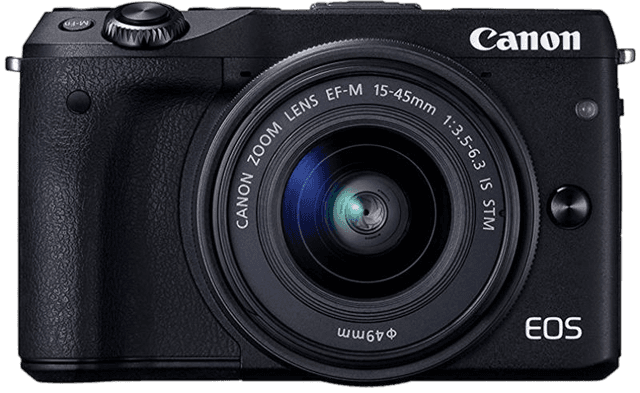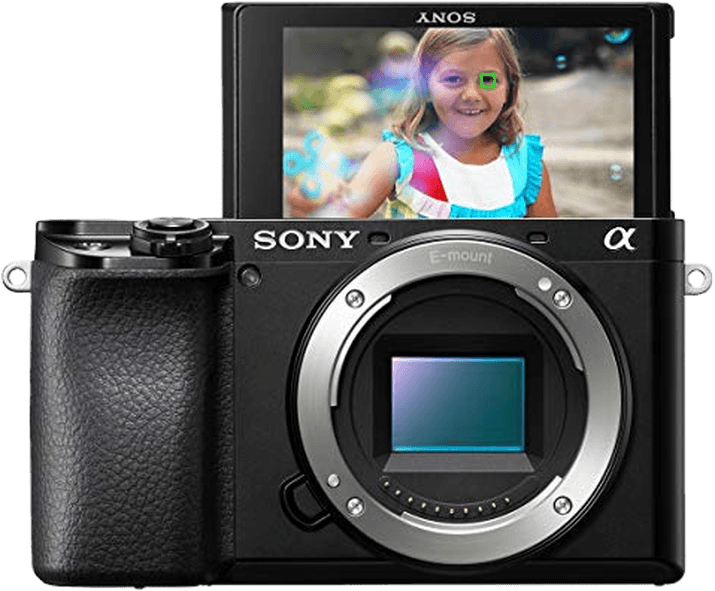Canon EOS M3 vs Sony a6100 Comparison
Canon EOS M3

Sony a6100

The Sony a6100 emerges as the winner with a score of 66/100, while the Canon EOS M3 trails behind with 56/100. Both cameras share similarities as mirrorless models, announced in 2015 and 2019 respectively. They have comparable sizes and weights, with the a6100 being slightly larger and heavier (120 x 67 x 59mm, 396g) than the M3 (111 x 68 x 44mm, 366g).
The a6100’s higher score reflects its superior features, despite being cheaper at $750 compared to the M3’s $870 launch price. However, the EOS M3 may still have its advantages, such as being lighter and more compact, making it easier to carry around.
Taking these factors into account, the Sony a6100 is a better choice due to its higher score and lower price, while the Canon EOS M3 could be favored by those prioritizing portability.
Canon EOS M3 vs Sony a6100 Overview and Optics
The Sony a6100 wins in optics, scoring 68/100, while the Canon EOS M3 scores 60/100. Both cameras share some common specifications, such as having 24 megapixels, a CMOS sensor, an APS-C sensor size, and no image stabilization. They also have different lens mounts, with the Canon using an EF-M mount and the Sony using an E mount.
The Sony a6100 outperforms the Canon EOS M3 in several areas. Its shooting speed of 11 is significantly faster than the Canon’s 4.2, allowing for quicker image capture. Additionally, the Sony a6100 has a higher DXOMARK sensor score of 82, compared to the Canon’s 72. This indicates that the Sony has a better sensor performance, resulting in improved image quality.
On the other hand, the Canon EOS M3 has a slight edge in megapixels, with 24.2 compared to the Sony’s 24. This small difference may not be significant in real-world usage, but it does give the Canon a minor advantage in image resolution. However, this advantage is not enough to surpass the Sony a6100’s overall superior optics performance.
Both cameras have their strengths and weaknesses, but the Sony a6100 proves to be the better option in terms of optics. Its faster shooting speed and higher sensor score contribute to its higher overall score and make it the preferred choice for those prioritizing image quality and performance. The Canon EOS M3, while having a minor advantage in resolution, falls short in other key areas, making the Sony a6100 the clear winner in this comparison.
Canon EOS M3 vs Sony a6100 Video Performance
The Sony a6100 outperforms the Canon EOS M3 in video capabilities, earning a video score of 91/100 compared to the M3’s 43/100. Both cameras share some common specifications, such as offering Full HD video resolution (1920 x 1080) and having a maximum video frame rate of 30fps. However, the a6100 surpasses the M3 in several aspects.
The Sony a6100’s superior video quality is evident in its 4K video resolution (3840 x 2160), which is significantly higher than the M3’s Full HD resolution. Additionally, the a6100 boasts a maximum video frame rate of 120fps, allowing for smoother and more detailed slow-motion footage. The camera also features built-in time-lapse functionality, providing further creative options for videographers.
Despite the Canon EOS M3’s lower video score, it may still be a suitable choice for some users, particularly those who don’t require 4K resolution or advanced video features. The M3’s Full HD resolution and 30fps frame rate are sufficient for casual video recording or simple content creation.
To sum up, the Sony a6100 is the clear winner in terms of video capabilities, offering 4K resolution, a higher frame rate, and time-lapse functionality. The Canon EOS M3, while not as advanced in this area, could still be a viable option for those with less demanding video needs. Ultimately, the choice between these cameras will depend on individual preferences and requirements.
Canon EOS M3 vs Sony a6100 Features and Benefits
The Sony a6100 triumphs over the Canon EOS M3 with a feature score of 68/100, compared to the M3’s 57/100. Both cameras share several common specifications, including a 3-inch screen size, touchscreen capability, flip screen, absence of GPS, and WIFI connectivity. However, the winning camera, the Sony a6100, has additional advantages over its competitor.
The Sony a6100 is superior due to its higher feature score and the presence of Bluetooth connectivity, which the Canon EOS M3 lacks. This allows for seamless connection with other devices, making the transfer of photos and videos more efficient. Additionally, the a6100 has a slightly higher screen resolution at 921,600 dots, compared to the M3’s 1,040,000 dots. This difference results in a crisper display and better image quality during playback and review.
The Canon EOS M3, despite its lower feature score, has some advantages over the Sony a6100. Its screen resolution of 1,040,000 dots is higher than the a6100’s 921,600 dots, providing a marginally better display and image quality during playback. However, the absence of Bluetooth connectivity puts the M3 at a disadvantage when compared to the a6100.
In comparing the features of the Canon EOS M3 and the Sony a6100, it is evident that the Sony a6100 is the superior choice due to its higher feature score and the inclusion of Bluetooth connectivity. The Canon EOS M3 offers a slightly higher screen resolution but falls short in overall features. Ultimately, the Sony a6100 is the better camera, offering a more comprehensive set of features for both amateur and professional photographers.
Canon EOS M3 vs Sony a6100 Storage and Battery
The Sony a6100 outperforms the Canon EOS M3 in storage and battery, with a score of 37/100 compared to the M3’s 16/100. Both cameras have one memory card slot and accept SD, SDHC, and SDXC cards. However, the a6100 also supports Memory Stick Pro Duo cards.
The a6100’s battery life is significantly longer, providing 420 shots compared to the M3’s 250 shots. The a6100 uses an NP-FW50 battery, while the M3 relies on an LP-E17 battery. Additionally, the a6100 offers USB charging, making it more convenient to recharge on the go.
The M3 does not have any advantages in storage and battery over the a6100. The Sony a6100 is the clear winner in this category, with better battery life and more versatile memory card compatibility. The Canon EOS M3 falls short in comparison, offering fewer shots per charge and lacking USB charging capability.
Canon EOS M3 vs Sony a6100 – Our Verdict
Are you still undecided about which camera is right for you? Have a look at these popular comparisons that feature the Canon EOS M3 or the Sony a6100:

